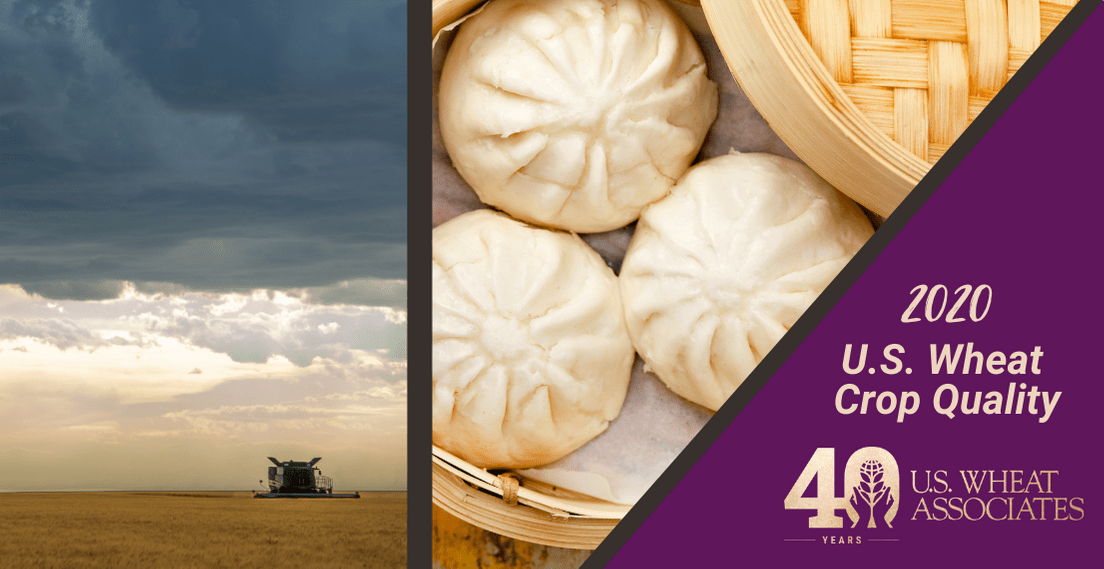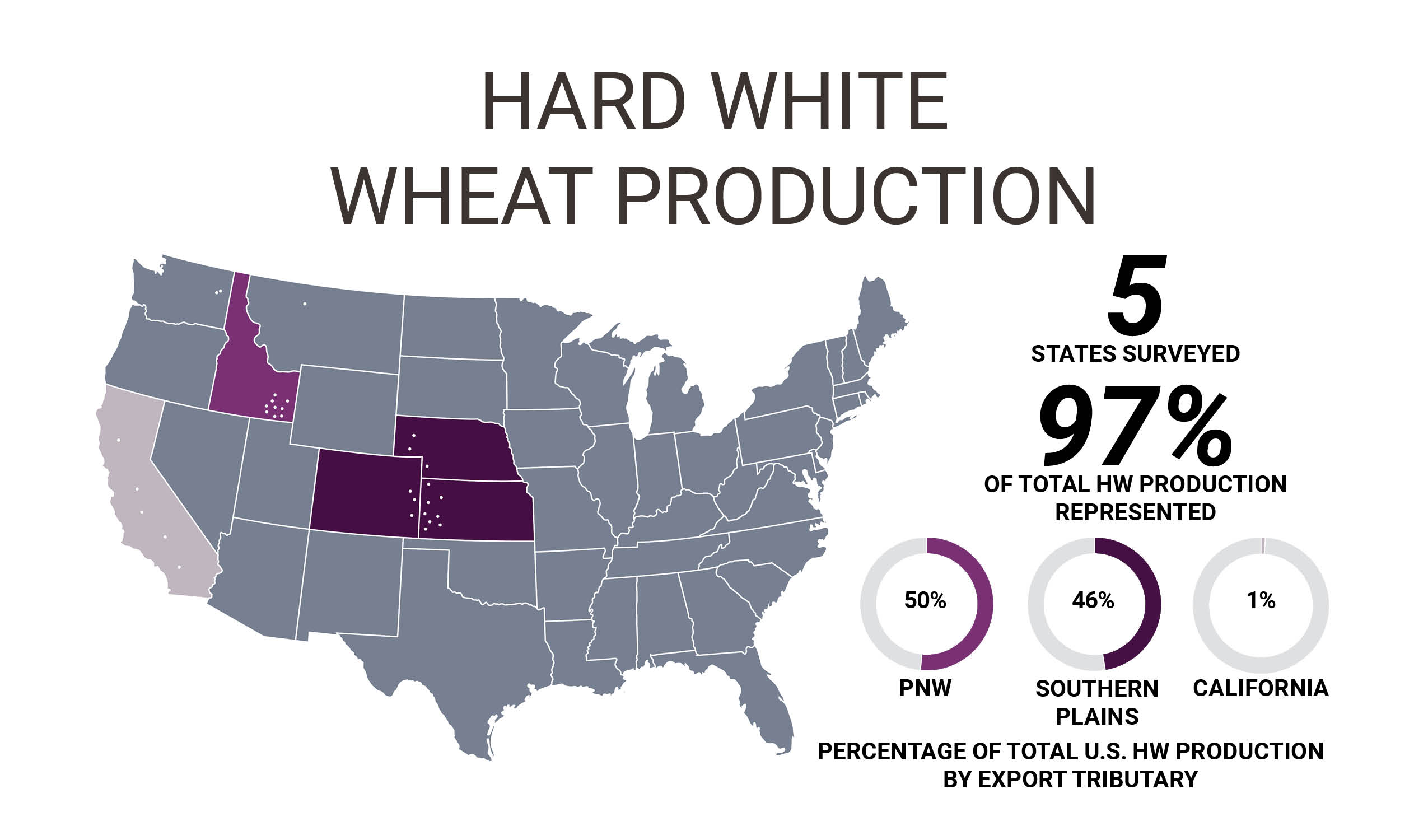Good Performance in Limited Exportable Hard White Supplies for 2020
Samples from the 2020 hard white (HW) wheat crop show good quality performance in milling, dough properties and finished products, including pan breads, Asian noodles and steamed breads. The Southern Plains, Pacific Northwest (PNW) and California composites all show good bread baking potential. Exportable supplies are limited.
U.S. Wheat Associates (USW) has posted a full 2020 California Hard White Regional Report on its website here.
The 2020 HW crop was grown primarily in Idaho, Kansas, Colorado, California and Nebraska. Other states including Montana, North Dakota and South Dakota had limited production. U.S. Wheat Associates (USW) estimates 2020 HW production at 894,483 metric tons (MT), down from 2019’s 979,321 MT reported by USDA.
Here are a few highlights from the 2020 HW wheat crop.
Wheat and Grade Data:
- Grade – Five composites graded U.S. No. 1. The medium protein Southern Plains graded U.S. No. 3 due to 2.1% wheat of contrasting classes.
- Test Weight ranged from 61.0 to 64.1 lb/bu (80.2 to 84.2 kg/hl).
- Wheat Moisture ranged from 8.9 to 11.0%.
- Wheat Protein ranged from 11.3 to 13.2% (12% mb).
- Wheat Ash ranged from 1.43 to 1.62% (14% mb).
- Kernel Hardness ranged from 59.0 to 81.5.
- Kernel Diameters ranged from 2.47 to 2.86 mm.
- 1000 Kernel Weight values of the Southern Plains medium- and high-protein composites are 29.3 and 27.5 g, respectively. All others are greater than or equal to 31.9 g.
- Wheat Falling Number values are 396 sec or higher for all composites.
Flour, Dough and Baking Data:
- Laboratory Mill Flour Extractions range from 70.6 to 74.2%, L* values (whiteness) 90.7 to 92.0, flour protein 10.8 to 12.7% (14% mb), and flour ash 0.45 to 0.50% (14% mb). These values are within the historical ranges of HW flour considering the wide production area.
- Flour Wet Gluten Contents range 24.8 to 40.8% depending on flour protein content.
- Amylograph peak viscosities are between 714 and 1039 BU for all composites.
- Damaged Starch values are in the range of 3.1 to 5.5%.
- Lactic Acid SRC values range 144 to 157%, indicating medium to strong gluten strength.
- Farinograph water absorptions range 55.0 to 62.4% and stability times 9.0 to 37.0 minutes, exhibiting medium to strong dough characteristics.
- Alveograph value ranges are: P (59 to 108 mm); L (99 to 135 mm); and W (240 to 395 (10-4 J)).
- Extensograph data at a 135-minute rest shows maximum resistance in the range of 740 to 1013 BU, extensibility 15.6 to 23.2 cm and area 153 to 246 cm2.
All composites show good baking performance relative to protein content, with bake absorptions in the range of 59.9 to 67.4%, loaf volumes of 796 to 942 cc, and crumb grain and texture scores of 7.0 to 8.0 points.
Noodle Evaluation: HW flours and a control flour were evaluated for both Chinese raw noodles (white salted) and Chinese wet noodles (yellow alkaline). Overall, this year’s HW samples will produce noodles with acceptable color and texture if low ash patent flour is used.
- Chinese Raw Noodles – The L* values at 0 hours of production and after 24 hours of storage at room temperature are acceptable for all samples (72 is the minimum value at 24 hours). The sensory color stability scores for PNW and Southern Plains samples are similar to or better than the control noodle of 7.0. Cooked noodle texture is softer for California composites.
- Chinese Wet Noodles – Sensory color stability scores are acceptable for parboiled noodles from all composites. The cooked noodle texture is softer for PNW composites.
Steamed Bread Evaluation: HW flours were evaluated for Asian steamed breads in comparison with a control flour. Results show all composites are acceptable for steamed bread with total scores equivalent to or better than the control flour. Blending 25% SW flour with high protein HW flour would improve overall steamed bread quality.
Buyers are encouraged to review their quality specifications to ensure that their purchases meet their expectations.
View other summaries of the 2020 U.S. wheat crop:
Hard Red Winter
Hard Red Spring
Soft White
Soft Red Winter
Durum
View the full 2020 U.S. Crop Quality Report and other related resources here.




